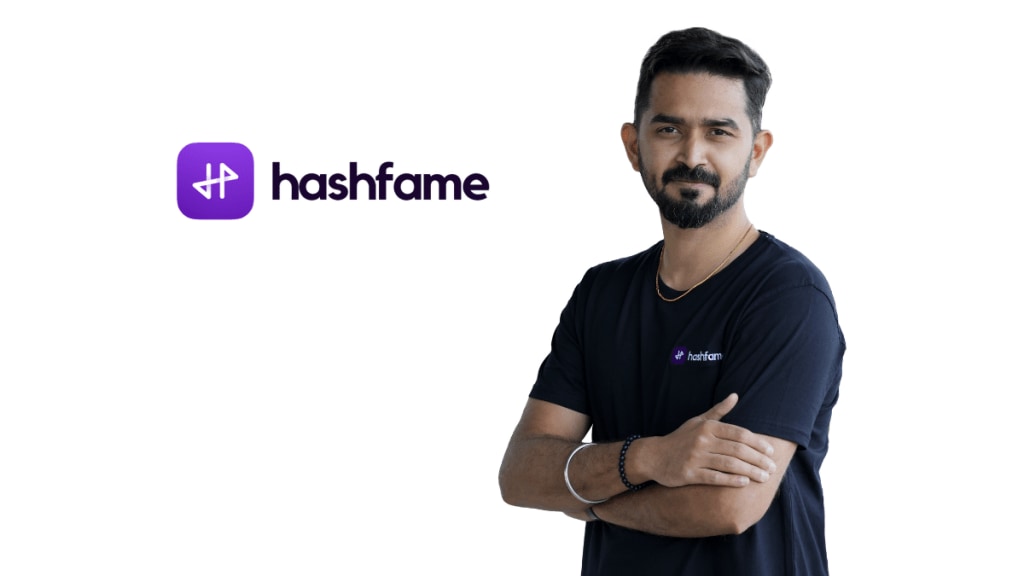The influencer marketing industry is booming, with creators and brands constantly seeking new ways to collaborate. Yet, this growth has come with challenges: creators struggle for consistent opportunities, and marketers face the daunting task of finding the right talent in an oversaturated and fragmented space. HashFame, a platform co-founded by Anirudh, positions itself as a solution to these issues by acting as a bridge between creators and marketers.
“When we started HashFame, the gap was clear—creators lacked steady work, and marketers were overwhelmed by too many choices and not enough tools to make informed decisions,” Anirudh, co-founder, HashFame told BrandWagon Online. “We wanted to create a system where both sides could connect meaningfully without intermediaries or excessive complexity,” he added.
Grassroot beginnings
HashFame’s journey began modestly, with a WhatsApp group used as a minimum viable product (MVP) to test its concept. Early users provided critical feedback, helping the team refine the platform’s offerings. This lean, community-focused approach set the foundation for the app’s eventual launch and growth. “We learned early on that solving real problems was more important than flashy features. That focus kept us from veering into unnecessary complexities and built trust among our users, particularly marketers,” Anirudh explained.
While this grassroots strategy helped build credibility, it also exposed a potential weakness: HashFame’s reliance on organic, community-driven growth could limit its scalability, particularly in an industry where competitors leverage advanced data analytics and artificial intelligence to deliver personalised solutions.
Can technology be a double-edged sword?
Unlike other platforms that invest heavily in AI and machine learning, HashFame has taken a more cautious approach. “We’re not chasing fancy tech trends. Our priority is a seamless user experience, and if advanced tools become necessary for that, we’ll adopt them. But for now, simplicity works,” Anirudh added. This approach has its merits—users benefit from a straightforward, intuitive interface—but it also risks making the platform less competitive in an industry where data-driven insights and AI-powered matching are becoming the norm. For example, platforms like CreatorIQ and Grin use AI to provide detailed analytics, helping brands predict campaign performance or identify creators with a high engagement rate in niche markets. HashFame’s lack of such features could be a limitation as the market matures.
Addressing the market pain points
HashFame seeks to address two major challenges in the creator economy: the unpredictability of work for creators and a lack of transparency for marketers. The platform offers a curated, invite-only network designed to eliminate the noise and ensure quality connections. “For creators, we’re providing consistent opportunities, not just one-off gigs. For marketers, we simplify the process of finding the right talent, saving hours of manual outreach,” Anirudh commented. Yet, the invite-only model raises questions about inclusivity. While it helps maintain quality, it risks excluding smaller creators who might lack the clout to join but have the potential to deliver impactful campaigns. In a market already skewed toward big influencers, HashFame’s approach could unintentionally widen the gap between emerging creators and established stars.
A focus on transparency, but is it enough?
Transparency and trust are key pillars of HashFame’s philosophy. The platform’s creator ratings system allows marketers and creators to evaluate one another, fostering accountability. “When creators can rate marketers and vice versa, it builds a foundation of mutual respect,” Anirudh added. However, transparency in influencer marketing is a complex issue that goes beyond ratings. Consumers are increasingly sceptical of sponsored content, often perceiving it as inauthentic. While Anirudh emphasises that creators and brands should prioritise genuine endorsements over marketing tactics, the platform offers limited mechanisms to enforce this. Without more robust features to vet partnerships or monitor campaign integrity, HashFame’s commitment to authenticity may remain aspirational rather than actionable.
Ambitious goals, uncertain roads
Looking ahead, HashFame aims to decentralise opportunities for creators, ensuring that even those with modest followings have access to meaningful collaborations. The platform also plans to expand geographically, reaching more creators and marketers across India and beyond. “Our vision is a merit-driven marketplace where every creator has a fair shot, regardless of their following size,” Anirudh explained. While the goals are admirable, they also highlight potential challenges. Competing platforms are aggressively scaling their operations and integrating advanced technologies. HashFame’s reliance on a simpler, community-focused model could limit its ability to keep pace with these industry giants.
Conclusion: A platform with promise, but room for growth
HashFame’s approach to solving creator-marketer inefficiencies is refreshing in its simplicity, but it may not be enough to sustain long-term growth in an industry driven by rapid technological innovation and intense competition. “We’re focused on building meaningful, long-term connections. It’s not about transactions—it’s about trust and community,” Anirudh noted. The question remains whether HashFame can scale while staying true to these values or if it will need to adapt its model to keep up with an evolving and increasingly competitive creator economy.
